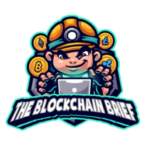The digital asset trading landscape has undergone a fundamental transformation in recent years, driven by technological advancement and automation. The emergence of cryptocurrency robots as sophisticated trading tools has revolutionized how markets are approached, bringing unprecedented levels of precision and efficiency to trading operations. These automated systems represent the cutting edge of trading technology, operating continuously to identify and capitalize on market opportunities that human traders might overlook.
What Makes a Trading Platform Reliable
Reliability in cryptocurrency trading platforms stems from three core components: technical infrastructure, security architecture, and operational transparency. Leading platforms maintain dedicated infrastructure across multiple geographic locations, ensuring continuous operation even during market volatility spikes.
Security Architecture
- Multi-layer encryption protocols for all API connections.
- Hardware security modules (HSM) for private key protection.
- Real-time threat detection with automated response systems.
- Regular penetration testing by external security firms.
- Multi-signature protocols for asset withdrawals.
Technical Performance
Server infrastructure directly impacts trading bot performance, particularly during high-volatility periods when milliseconds matter.
- 99.99% uptime guarantee through redundant systems.
- Order execution speeds under 50ms.
- Automated load balancing across global servers.
- Real-time system health monitoring.
- Automatic failover mechanisms.
Operational Standards
Transparent operations and clear communication distinguish reliable platforms from questionable ones. Key indicators include:
- Regular proof-of-reserve audits.
- Clear fee structures without hidden costs.
- Detailed incident response protocols.
- Comprehensive API documentation.
- Professional support with response SLAs.
Top Reliable Trading Platforms
Trading platforms suitable for cryptocurrency robots divide into three distinct tiers, each serving specific trading needs and operational scales. Understanding these distinctions helps match platform capabilities with trading requirements.
Enterprise-Grade Infrastructure
Enterprise platforms cater to institutional traders and sophisticated algorithms, handling millions in daily volume. These venues prioritize stability and execution speed over user interface aesthetics.
- Technical Architecture
Built on distributed systems, these platforms offer:
- Dedicated server clusters with 99.99% uptime.
- Cross-regional load balancing.
- Multi-datacenter redundancy.
- Automated failover systems.
- Real-time database synchronization.
- API Performance
Advanced API capabilities include:
- FIX protocol implementation with sub-10ms latency.
- WebSocket streams handling 10,000+ messages/second.
- REST endpoints with institutional rate limits.
- Binary protocol support for HFT.
- Custom order routing algorithms.
- Risk Controls
Sophisticated risk management through:
- Real-time exposure calculations.
- Multi-level circuit breakers.
- Dynamic position limits.
- Automated deleveraging protocols.
- Cross-collateral management.
Operational Standards
Operational excellence forms the backbone of reliable trading platforms, extending beyond mere technical capabilities. Top-tier platforms implement comprehensive systems that ensure consistent performance, security, and support for cryptocurrency robots.
Security Architecture
Security implementations reflect a platform’s commitment to asset protection. Leading venues employ multi-layered approaches that combine hardware and software solutions.
Core security features include:
- Hardware security modules for private key storage.
- Real-time fraud detection with AI-powered analysis.
- Customizable API key permissions by IP and function.
- Multi-factor authentication for critical operations.
These systems operate under constant review, with regular penetration testing and security audits conducted by specialized firms. Internal security teams monitor operations 24/7, responding to potential threats before they impact trading activities.
Asset Management
Asset protection combines technological solutions with operational procedures. Platforms typically maintain:
- 95% of assets in cold storage systems.
- Insurance coverage for hot wallet holdings.
- Regular proof-of-reserve attestations.
- Multi-signature protocols for withdrawals.
Risk management extends to user funds through segregated accounts and transparent custody solutions. Regular external audits verify asset backing and operational integrity, while automated systems monitor wallet balances and movement patterns.
Technical Support Infrastructure
Professional support distinguishes reliable platforms through:
Response Systems
- 24/7 technical support availability.
- Dedicated API support channels.
- Maximum response time guarantees.
- Emergency protocol activation.
Documentation
- Comprehensive API references.
- Strategy implementation guides.
- Code examples in multiple languages.
- Regular documentation updates.
Support teams typically include specialized API technicians who understand both trading mechanics and programming requirements, ensuring accurate and relevant assistance for bot operators.
Regulatory Compliance
Modern trading platforms balance innovation with regulatory requirements through:
Systematic approaches:
- Automated KYC/AML procedures.
- Transaction monitoring systems.
- Regulatory reporting tools.
- Compliance documentation management.
Platforms maintain relationships with regulatory bodies across jurisdictions, ensuring continuous compliance with evolving requirements while supporting legitimate trading activities.
This infrastructure enables consistent operation of trading bots while maintaining security and regulatory compliance. Regular updates and improvements ensure systems remain current with market demands and security standards.
Key Features to Consider
The selection of a trading platform for cryptocurrency robots requires careful evaluation of multiple technical and operational aspects. While many platforms offer similar basic features, the depth and quality of implementation can significantly impact trading performance and reliability.
API Infrastructure
The foundation of any automated trading system lies in its API capabilities. Modern trading platforms offer multiple API interfaces, each serving specific purposes in the trading ecosystem. REST APIs handle general requests and account management, while WebSocket connections deliver real-time market data and order updates.
Critical API considerations include:
- Rate limit structures for different endpoint types
- WebSocket connection stability and reconnection handling
- Order placement confirmation speeds
- Market data refresh frequencies
Advanced platforms implement sophisticated rate limiting systems that adapt to market conditions and user requirements. These systems often provide burst allowances during high-volatility periods while maintaining platform stability through intelligent load balancing.
Market Access and Liquidity
Effective bot trading requires deep, liquid markets with minimal slippage. Platform evaluation should focus on:
Market depth characteristics:
- Average bid-ask spreads across time periods
- Order book depth at various price levels
- Market impact analysis tools
- Historical liquidity patterns
Trading pairs coverage extends beyond simple quantity metrics. The quality of market making and the presence of professional liquidity providers significantly impact execution quality. Leading platforms maintain relationships with multiple market makers to ensure consistent liquidity across all major pairs.
Advanced Trading Capabilities
Modern trading demands sophisticated order types and execution algorithms. Platforms should provide:
Trading features that enhance bot operations:
- Custom order routing options
- Advanced order types including conditional orders
- Position management tools
- Risk control mechanisms
These capabilities enable complex trading strategies while maintaining operational safety through built-in risk management features. Integration with external risk management systems further enhances trading flexibility and security.
Development Environment
The quality of development tools directly impacts strategy implementation and maintenance efficiency. Comprehensive platforms provide:
Development support through:
- Detailed API documentation with practical examples
- Testing environments with realistic market conditions
- Historical data access for backtesting
- Community resources and support channels
Strong development environments accelerate strategy deployment while reducing operational risks through proper testing and validation procedures. Regular platform updates introduce new features while maintaining backward compatibility for existing systems.
Cost Structure Analysis
While direct trading fees represent the most visible cost, comprehensive analysis should consider:
Total operational costs including:
- API access fees and requirements
- Data feed charges
- Volume-based fee structures
- Hidden costs in spread markups
Understanding the complete cost structure enables accurate profitability projections and strategy optimization. Leading platforms maintain transparent fee structures while offering volume-based incentives that reward consistent trading activity.
Integration Capabilities
Modern trading often requires interaction with multiple systems and services. Evaluation should consider:
Integration aspects such as:
- Third-party service compatibility
- Custom webhook support
- Data export capabilities
- External risk management system connectivity
 Platforms with robust integration capabilities enable sophisticated trading operations that combine multiple data sources and execution venues for optimal performance.
Platforms with robust integration capabilities enable sophisticated trading operations that combine multiple data sources and execution venues for optimal performance.
This comprehensive approach to feature evaluation ensures selection of platforms that not only meet current requirements but can also support future strategy evolution and operational growth.
Our Founder and Chief Enthusiast: With a background that’s a wild mix of tech enthusiasm, finance, and a short stint believing blockchain was a new martial arts technique, Matej is the heart and soul of TheBlockchainBrief.com. He’s got more passion for cryptocurrency than most people have for coffee, and that’s saying something.



